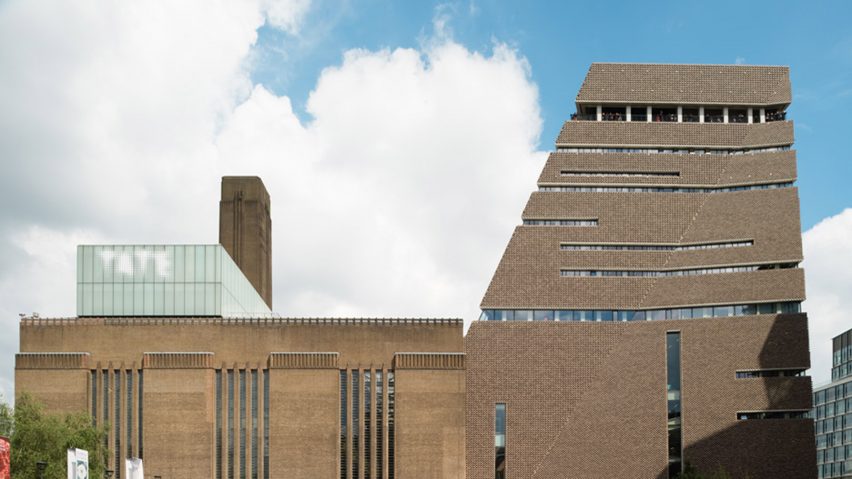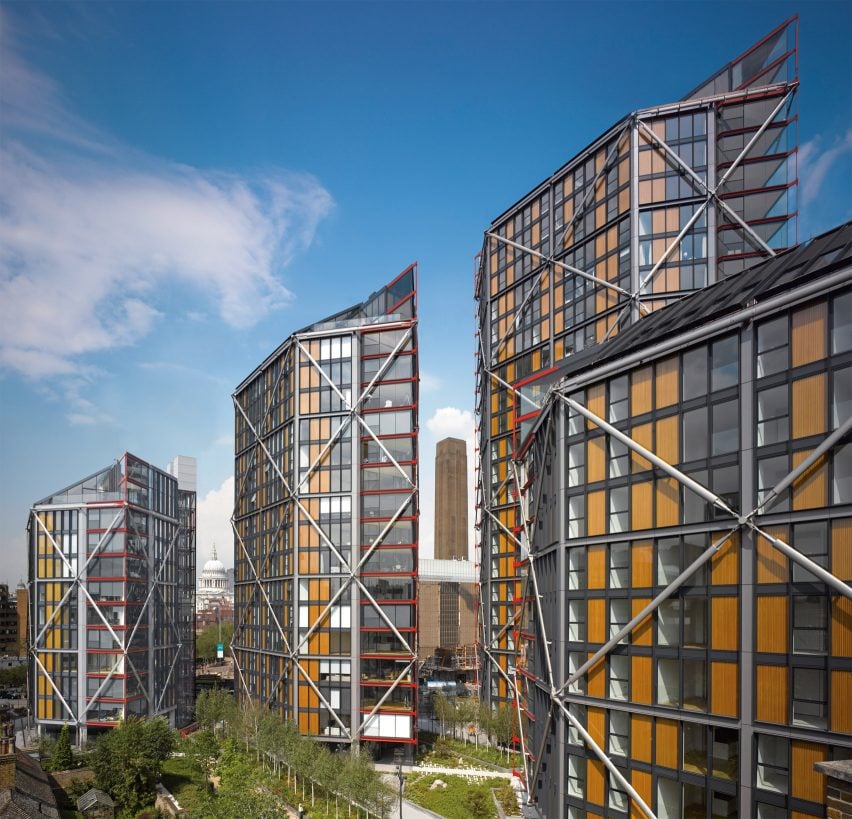
Neo Bankside residents take Tate Modern to court over Herzog & de Meuron extension
Residents of Rogers Stirk Harbour's Neo Bankside apartments are taking legal action against Tate Modern to force the gallery to close part of the viewing platform of its recent Herzog & de Meuron-designed extension.
Five residents have lodged a complaint with the High Court in London, claiming the museum's viewing terrace has turned their daily lives into "a public exhibit for the benefit of those using the viewing platform".
The residents of the Rogers Stirk Harbour-designed development want the Tate Modern to impose restrictions on visitors to its 10th-floor viewing terrace, which faces directly into their apartments.
The feud between the gallery and residents has been ongoing since Herzog & de Meuron's Switchhouse and its terrace opened last summer.
Owners and tenants of the flats – which sell for upwards of £1.5 million – claim gallery-goers have been been using binoculars, cameras and mobile phones to photograph and post photographs of their apartments on social media.
"The design of the building has always included a high-level terrace for the benefit of the public, but we cannot comment further given the conditions of the legal process," a spokesperson for Tate Modern told Dezeen.

Former Tate galleries director Nicholas Serota, who was responsible for the launch of the Herzog & de Meuron-designed Tate Modern in 2000 and its extension in 2016, previously suggested concerned residents might add blinds or net curtains to their window walls to stop visitors looking into their homes.
Tate Modern has since installed signs asking visitors to respect their neighbours' privacy, but Neo Bankside residents say the gallery should do more.
Their claim, published in part by The Architect's Journal, says the viewing gallery violates European Convention on Human Rights articles that provide a right to respect for people's private and family lives, and their homes.
It asks the gallery to set up screens or cross-hatched out-of-bounds areas on the terrace, which is open to visitors daily from 10am until 6pm or 10pm.
"The defendants' use of … part of its viewing platform is unreasonably interfering with the claimants' enjoyment of their flats, so as to be a nuisance," read the papers, according to an article by The Architect's Journal.
"The defendant, at little or no cost, could easily stop this invasion of the claimants' privacy and home life. For example, by erecting cordons, the defendant could prevent visitors to the viewing platform, or attendees at private events, from entering the cross-hatched area."
"Any resulting 'downside' would be modest: the defendants' use of the cross-hatched area as part of a viewing platform does nothing to promote the performance by the defendant of its statutory functions; and, whilst views from some parts of the viewing platform are spectacular, the views from the cross-hatched area that cannot be seen from elsewhere on the viewing platform are unremarkable."
Planning permission was granted for Rogers Stirk Harbour + Partners' Neo Bankside in 2007 and Herzog & de Meuron's Tate extension in 2009, despite complaints from the occupiers of the nearby Blue Fin building over privacy.
Native Land, the developer behind Neo Bankside, said potential residents were made aware of the Tate Modern extension prior to moving in.
"While development of Neo Bankside had already begun when plans for the new gallery were submitted to the authorities, potential buyers at Neo Bankside had access to marketing material which showed the location of the planned viewing gallery. A model showing the planned Tate extension in context to Neo Bankside was also available," a spokesperson for the developer Native Land told The Guardian in September 2016.